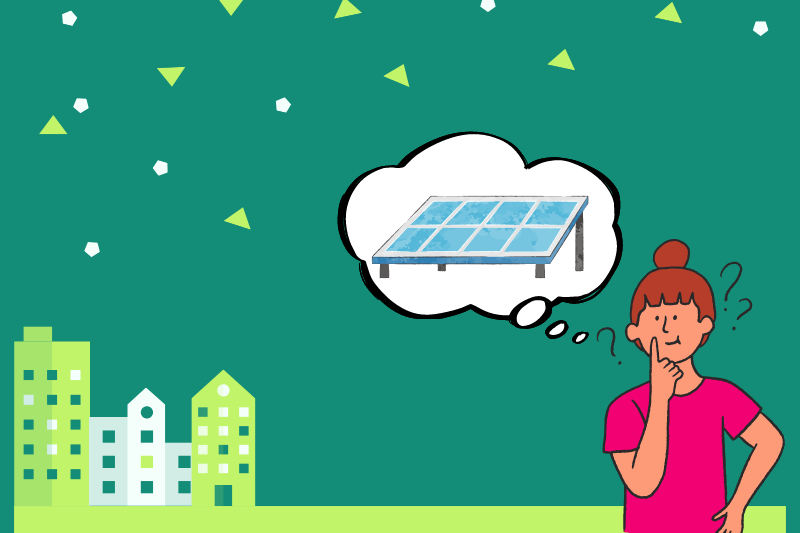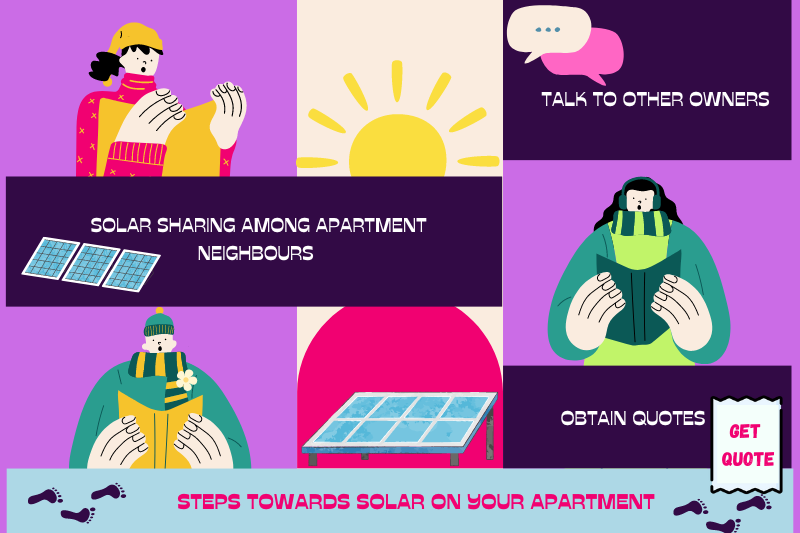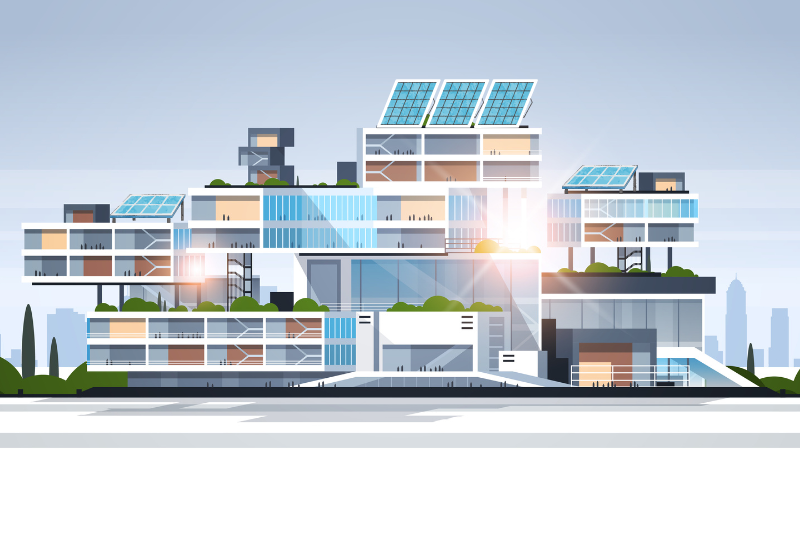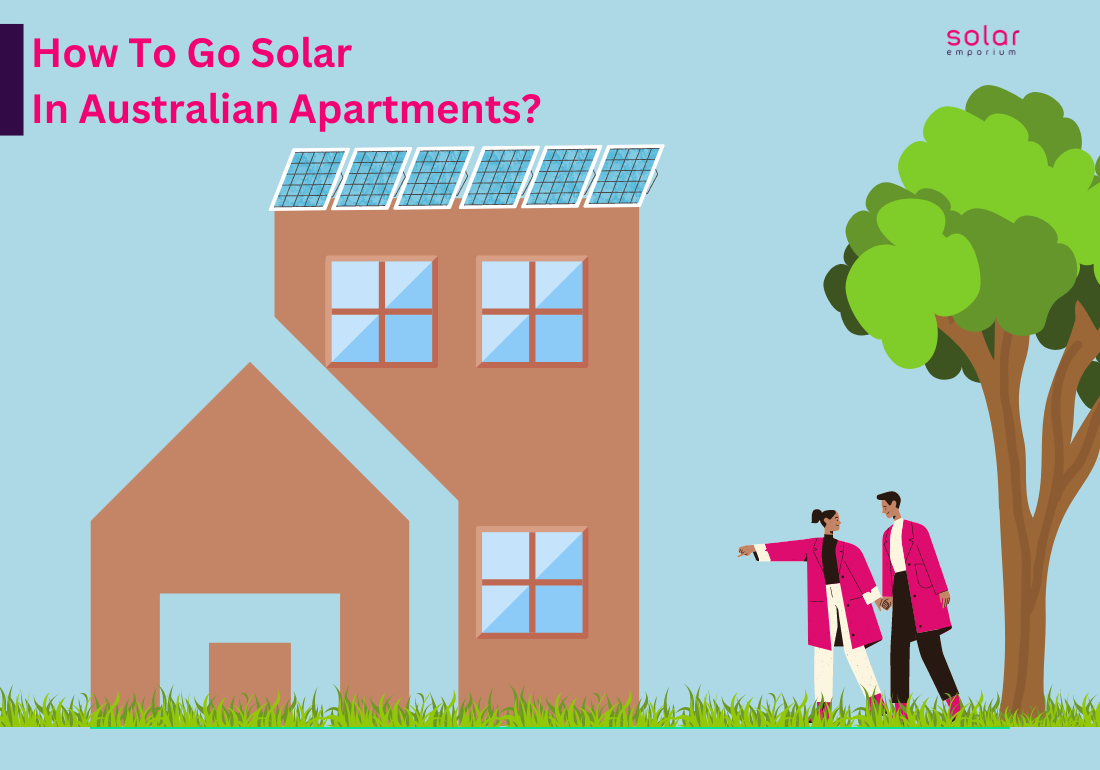Do you live in an apartment and want to know if you can install solar panels on your building? Then you have come to the right place. The short answer is yes! But there’s much to know before installing solar panels while living in an apartment building.
So how to go solar in Australian apartments?
Apartment residents who want to take advantage of the benefits of solar energy have different options. Here, we’ll look at how to go solar in Australian apartments. And what you should know before making the switch.
Understanding Solar Power
Solar energy has emerged as a leading solution in Australia as the most effective sustainable energy. For Australian apartments, the transition to solar energy might seem confusing.
However, with the right information and guidance, it’s entirely achievable. This blog will guide you through going solar in your Australian apartment, covering everything from understanding solar power to installation and benefits.
Navigating Corporate Body
Government Incentives
The Australian government offers incentives to encourage the use of solar power. The Small-scale Renewable Energy Scheme (SRES) allows you to earn small-scale technology certificates (STCs) for every megawatt-hour of power your solar system generates. It can be sold to recoup some installation costs.
The STC program also applies to apartment buildings. The rebate is currently worth around $600 per kW of solar panels installed and is averaged across the country.
Our Solar Installation Partners will apply for the STC on your behalf and include this discount in your quote. That figure is decreasing yearly until it reaches zero in 2031, so the sooner you buy, the more money you’ll save!
Other rebates are available, but they vary depending on where you live. We strongly advise you to investigate whether grants or funding are available in your area.
The Benefits of Going Solar
Going solar in Australian apartments is not only feasible but also highly beneficial. With the right approach and resources, you can overcome the challenges and enjoy the numerous benefits of solar power.
- Cost Savings: Solar power can significantly reduce your electricity bills. Over time, the savings can offset the initial installation costs.
- Environmental Impact: Solar power is a clean, renewable energy source that reduces your carbon footprint.
- Increased Property Value: Apartments with solar power systems are often more attractive to potential buyers, enhancing the property’s value.
Solar Energy Is A Wise Investment for Landlords and Tenants

For some landlords, the environmental benefits of solar power are sufficient to persuade them to invest in solar.
Installing solar power on your rental property can improve its appeal to tenants, increase its value, and help it stand out in the rental market. This may allow you to raise your rental price to cover solar power installation costs.
There are also solar companies that act as a middleman between the landlord and the tenant. The tenant will pay for the solar electricity at a lower rate than grid power. A portion of this money is then transferred to the landlord.
The Challenges
Unlike standalone houses, apartments present unique challenges for solar installation. Some hurdles include shared rooftops, corporate body rules, and distributed generated power among residents.
However, these challenges are manageable, and many Australian apartments have successfully transitioned to solar power.
Is Your Apartment Building Eligible for Solar Energy?
A solar firm with a track record in apartment installations or an independent advisory service can offer expert guidance on the optimal choices for your building. For instance, you can still power the communal areas with a solar system if there’s limited roof space.
Initially, examine your roof or online aerial images to identify existing structures like collaborative rooftop spaces or infrastructure.
While some solar solutions for apartments may take several months to a year to put into action, the potential savings on bills and environmental advantages make it a worthwhile endeavour.
Solar Steps for Your Apartment Building

- Talk to your fellow owners and the owners’ corporation.
- Obtain estimated quotes, consult with a solar expert and examine different prices.
- Think about energy efficiency as well.
- Choose the best option according to your building structure.
- After all that, the owners’ association approves, and solar panels can be installed. Initiate a conversation about solar energy with fellow apartment owners and your owners’ association.
Solar Solutions for Apartments
Solar in Public Places
Solar panels are installed on the shared roof, and the electricity generated is used to power common areas. This is frequently the simplest solution because only one electricity meter and account are involved.
It can also be a good option if roof space is limited or if numerous common areas consume a lot of energy, such as lifts, a gym, a pool, or large air-conditioned common areas.
It is simple to distribute the benefit equally by lowering strata fees for common areas. Because this option is limited to powering the common areas, no owner or tenant’s electricity bill is reduced.
Individual Solar Panels
Another option is installing systems linked to individual units’ electricity meters. This works well for three or fewer stories of low-rise buildings, as roof space can be allocated for each apartment’s solar system.
Even if only some are involved, this can be a simple way for one or more residents to get solar. You may also be eligible for a rebate from Solar Victoria. You will almost certainly need the approval of your owners’ corporation.
Consider asking your neighbours if they’re interested in going solar with you. It can benefit you with a lower price for having a shared system. You can negotiate a lower price if you install multiple systems through the same solar company.
Once installed, this option works exactly like solar on a freestanding home, with no additional metering or monitoring equipment required and no interaction between your solar system and the systems of your neighbours.
Solar Sharing Between Neighbours
New technology distributes solar energy equally among apartments and businesses in the same building. And this option allows residents to opt-in to solar. This technology maximises the amount of solar energy used within the building.
It can also be a good option where roof space is limited compared to the number of apartments. As new technologies emerge, more providers are expected to launch similar offers or other apartment solutions.
If this type of solution seems appropriate for your building, research the most recent available options. Savings on individual residents’ energy bills may be worth the extra cost of enabling technology.
Agreement of Power Purchase
Your building’s owners’ corporation agreed to buy energy from a renewable source, like an on-site or off-site solar installation. A PPA leverages your collective purchasing power to secure lower renewable energy costs.
It does not may or may not have any changes to metering or wiring. Still, it implies that participating apartments will receive two bills: one from your regular electricity provider and one from the PPA for your portion of energy.
The sum of the two new bills will be less than your previous energy bill, resulting in savings.
Embedded Networks
All apartments in an embedded network are connected to the grid via a single meter and purchase electricity from the same retailer. These are more common in higher-density, larger apartments.
Better electricity rates can be negotiated by pooling the purchasing power of the entire building. Being a part of an embedded network necessitates the participation of all apartments.
And it is usually difficult or expensive for individuals who want to opt-out to change energy retailers. If you are already a member of an embedded network, you can install solar owned by the Embedded Network Operator and sell them to apartments in your building at a lower cost.
It can be a good option for buildings with an embedded network and want all apartment owners to participate. For more information on embedded networks, go to the Australian Energy Regulator.
New and Advanced Options
There are several new ways to purchase renewable energy that are becoming available. These include virtual power plants, microgrids, solar gardens, other ‘offsite solar’ solutions. These software platforms allow for energy trading and sharing.
If solar is wrong for your apartment, or if you have solar on your building but want to do more, keep an eye on this space. Many of these solutions are currently in trial or pilot phases or are only available in limited quantities.

Other factors to consider
- Additional metering and monitoring costs for equipment allow solar to be shared equitably among residents. Each apartment typically has its own electricity meter and account. But an apartment building’s rooftop solar system may be shared.
- Additional installation costs for tilt frames, longer cabling, and other hardware required to install solar on a flat roof, a concrete roof, or a tall building, for example.
- Additional installation costs for equipment, labour, and permits are needed. Tall buildings may require solar installers’ equipment and machinery.
- Costs are incurred during the planning and approvals stages. For a complicated installation, seek a solar feasibility study from a professional. There may be additional costs for legal advice or regulatory fees for some solutions.
Choosing the Right Solar Installer
Selecting a reputable solar installer like Solar Emporium is key to a successful solar transition. We are a Clean Energy Council (CEC) accredited solar installer. We can guide you towards a successful transition to renewable energy.
Start your solar journey with us and contribute to a sustainable future. Get a free quote and expert opinion today to make your renewable energy dream into reality.







